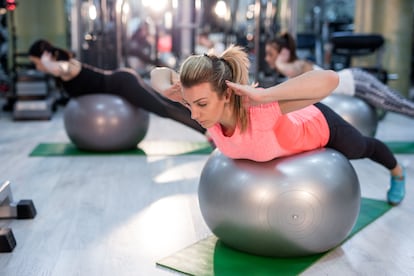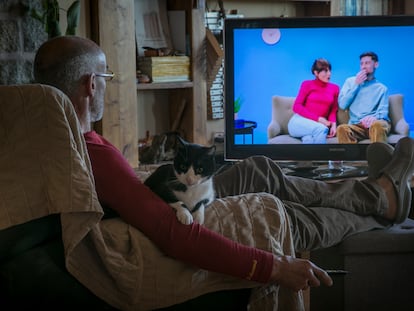Does Pilates improve flexibility? Yes. Does it help lose weight? No
Some say the original exercise regimen is outdated. It can improve muscle strength, alleviate chronic pain and relieve anxiety, but forget about six-pack abs and weight loss

It’s well-regarded method and gets good press. We know it as Pilates, but the mind-body exercise developed in the early 20th century by Joseph Pilates was originally called “Contrology.” He conceived it as the science and art of using the mind to control the physical body, including its internal organs. One of its main virtues is that anyone can do it – men, women, the elderly, pregnant women, people with injuries, and mothers with their babies.
Some say that people who do Pilates are fanatics, not followers or practitioners, because those who have fully embraced Pilates are not likely to tolerate any criticism or modification of the method. The experts we interviewed for this article say it takes six months of practice and learning before you can truly understand the method. Its devotees faithfully practice lightweight resistance training that strengthens the core muscles around the spine and quickly makes back pain disappear. In the 1990s, the low-impact Pilates workout was just what the injured and exhausted aerobics enthusiasts of the 1980s were looking for. Madonna and Uma Thurman soon became the celebrity poster children for Pilates.
Several scientific studies support the method and confirm its health benefits. It has been shown to improve muscle strength and flexibility, reduce chronic pain, and alleviate anxiety and depression.
But a few years ago, people began warning of an impending “Pilatespocalypse” – a massive emptying of Pilates studios as people flocked to the latest cardio workouts, Zumba, spinning and CrossFit.
Saved by the pandemic
Home confinement during the pandemic produced a renewed interest in Pilates due to its effectiveness in harmoniously connecting mind and body. However, the form of Pilates practiced today in many studios and gyms has evolved from the classic method developed almost 100 years ago. Recent advances in biomechanics have questioned some of its most iconic and complicated exercises.
“Pilates has been evolving – its founder was not a doctor,” said personal trainer Diego Jerez. Joseph Pilates was a German physical trainer and boxing enthusiast whose eclectic career included performing in a circus and training Scotland Yard agents in self-defense. He emigrated
to the United States after World War I, and published Your Health: A Corrective System of Exercise that Revolutionizes the Entire Field of Physical Education in 1934. The slim, 60-page initial manifesto of the Pilates method promised, “In 10 sessions you’ll feel the difference, in 20 sessions you’ll see the difference, and in 30 sessions you’ll have a whole new body.” The famous phrase now adorns the entrances of many studios around the world.
“The classical method recommended always keeping the spine straight without considering its natural curvature. So many exercises require you to flatten your spine against the floor, which produces compression in that area,” said Jerez, who has taught Pilates for five years in Madrid. He believes that everyone should practice Pilates at some point in their lives. “We now know that the function of the lower back is to provide stability and that it’s a force transmission point. There are many classic Pilates exercises that add movement and rotation to this area, which can cause injury with too much repetition,” said Jerez.
An updated Pilates
“Joseph Pilates did what he could with what was known at the time and most of his exercises have aged well, but some have not. Science has shown that the spine is not designed to move too much, and the exercises involving a great deal of lower back movement have been modified,” said Alberto Segovia, an instructor who does Pilates six hours a day. Segovia, who began practicing the method in 2001 when not many people in Spain knew what it was, created the online PILATES4K platform, which teaches an updated form of Pilates.

Elena Briceño, who has been teaching Pilates for 17 years, comes from the world of dance. She reminds us that when Joseph Pilates first created his exercise routine, our lives were less sedentary. “The classical method requires a lot of hip flexing, which causes the psoas muscle [in the lower lumbar region of the spine] to contract. This muscle is already tight because of all the time we spend in sitting positions.”
On the other hand, Andrés García, a fitness trainer who has been doing Pilates since 2008, still finds the classical method very effective. “You can tell when a body has been trained with Pilates. The spine is more flexible, the gluteus is firm, the legs are toned, and there is a great awareness of body movement.” In his experience, the best Pilates upgrades are the accessories that are now used. “When I first started, maybe there was a tension band available. Now we use hoops, balls, rollers, etc.”
Unrealistic expectations
One of the pitfalls that has plagued Pilates are the unrealistic expectations of new students. Pilates does not do everything. “It’s not a cardiovascular exercise. Fat is burned evenly throughout the entire body, so people looking for six-pack abdominal muscles will be disappointed,” said Jerez. “Pilates teaches you something much more important – the rules for
using your body – but it doesn’t help you lose weight or get a flat stomach.” Alberto Segovia says, “If you learn to move your body correctly, you’ll be able to sit on the floor and play with your grandchildren when you’re 80. If not, you’ll start having injuries when you’re 40.”
“Some people expect immediate results, but this is a method of body self-awareness that takes time. We have no idea how we move,” said Elena Briceño, who has seen how people pay no attention to their bodies until they have an injury. “Then they discover muscles they never felt before.” She recalls a student who felt the transversus abdominus muscle in her abdomen for the first time in class. “The expression on her face was complete surprise.”
Andrés García says that Pilates is “difficult because you have to learn to follow instructions, to breathe, to position the spine, to put the pelvis in neutral position, to draw strength from the abdomen instead of the cervical spine. It takes at least six months to get the hang of it, although you’ll see some progress in three months.”
Finding a good instructor is crucial. Alberto Segovia says that they want to establish a Pilates instructor certification process in Spain similar to the one for yoga. “Right now, Pilates training can range anywhere from 40 to 200 hours. A national certification would standardize the requirements for becoming an instructor.” For Segovia, the biggest benefit of Pilates is the self-awareness it teaches you. “You learn to converse with yourself and to know yourself. It brings you real happiness,” he says with conviction.
Tu suscripción se está usando en otro dispositivo
¿Quieres añadir otro usuario a tu suscripción?
Si continúas leyendo en este dispositivo, no se podrá leer en el otro.
FlechaTu suscripción se está usando en otro dispositivo y solo puedes acceder a EL PAÍS desde un dispositivo a la vez.
Si quieres compartir tu cuenta, cambia tu suscripción a la modalidad Premium, así podrás añadir otro usuario. Cada uno accederá con su propia cuenta de email, lo que os permitirá personalizar vuestra experiencia en EL PAÍS.
¿Tienes una suscripción de empresa? Accede aquí para contratar más cuentas.
En el caso de no saber quién está usando tu cuenta, te recomendamos cambiar tu contraseña aquí.
Si decides continuar compartiendo tu cuenta, este mensaje se mostrará en tu dispositivo y en el de la otra persona que está usando tu cuenta de forma indefinida, afectando a tu experiencia de lectura. Puedes consultar aquí los términos y condiciones de la suscripción digital.











































